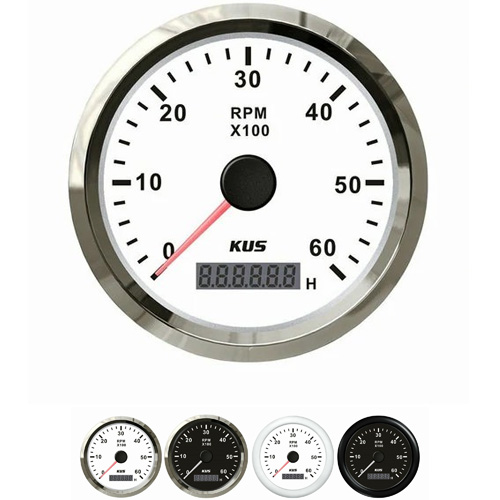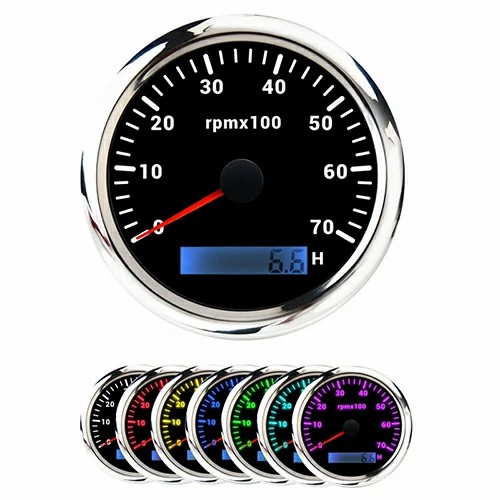motorcycle speedometer and tachometer
When driving at a medium speed in the top gear of the motorcycle, generally between 40-60 miles, the speedometer is roughly equal to the engine tachometer. The engine speed refers to the number of dynamic revolutions of the crankshaft of the engine per minute, and the speed refers to the driving speed of the whole vehicle at that time. When the gear, load and other conditions change, the ratio of the tachometer to the speedometer will also change. For example, when driving at the same speed in fourth gear and fifth gear, The tachometer of the engine is different. At the same speed on uphill and level roads, the speed is also different. When the throttle is high in low gear, the speed is high and the speed is low, while in high gear, you can get a higher speed with the same speed.
Motorcycle speedometer and tachometer are two different things. They can only happen to be consistent at a certain speed, not at every speed, and at the same speed, not at all times. For example, at the same speed, different road conditions, gears, loads, acceleration or constant speed will affect the speed and engine speed. For ordinary motorcycles, the speedometer may be "consistent" with the tachometer only when driving at the medium speed of the highest gear, but this "consistency" is not really consistent. The unit of the speedometer is km / h and the unit of the tachometer is kilorpm. For example, there is only a 6 for 60km / h and 6000 rpm, but it is not "consistent".
The electronic tachometer uses the electromagnetic principle. A piece of iron is connected with a pointer, and the outside is surrounded by an electromagnetic iron wire group. The electromagnet has three wires, which are positive, negative and high-voltage incoming wires. That is, the ignition wire of the engine. Every time this wire is powered, the engine will ignite once, that is, turn twice. According to this principle, the electromagnet will be magnetized once every time it is powered on. The faster it rotates, the stronger the magnetic force, and the pointer will go up. The mechanical tachometer uses a soft steel wire, one end is connected to the engine and the other end is connected under the instrument, and uses the power of the engine to drive the soft steel wire to rotate. Then there is a circular magnet with a bowl shaped iron plate on it. The iron plate is the pointer. The faster the rotation is, the faster the magnetic force takes the iron bowl. The principle of the mechanical tachometer is the same as that of the odometer on the left.
 English
English 



Get a Quote / Info